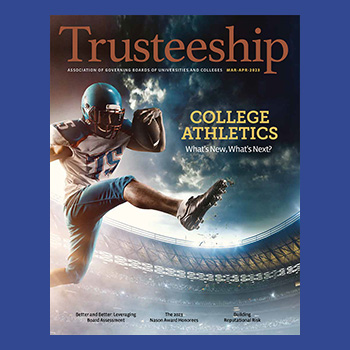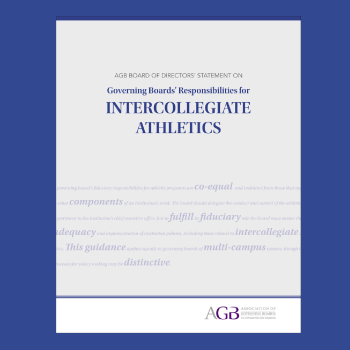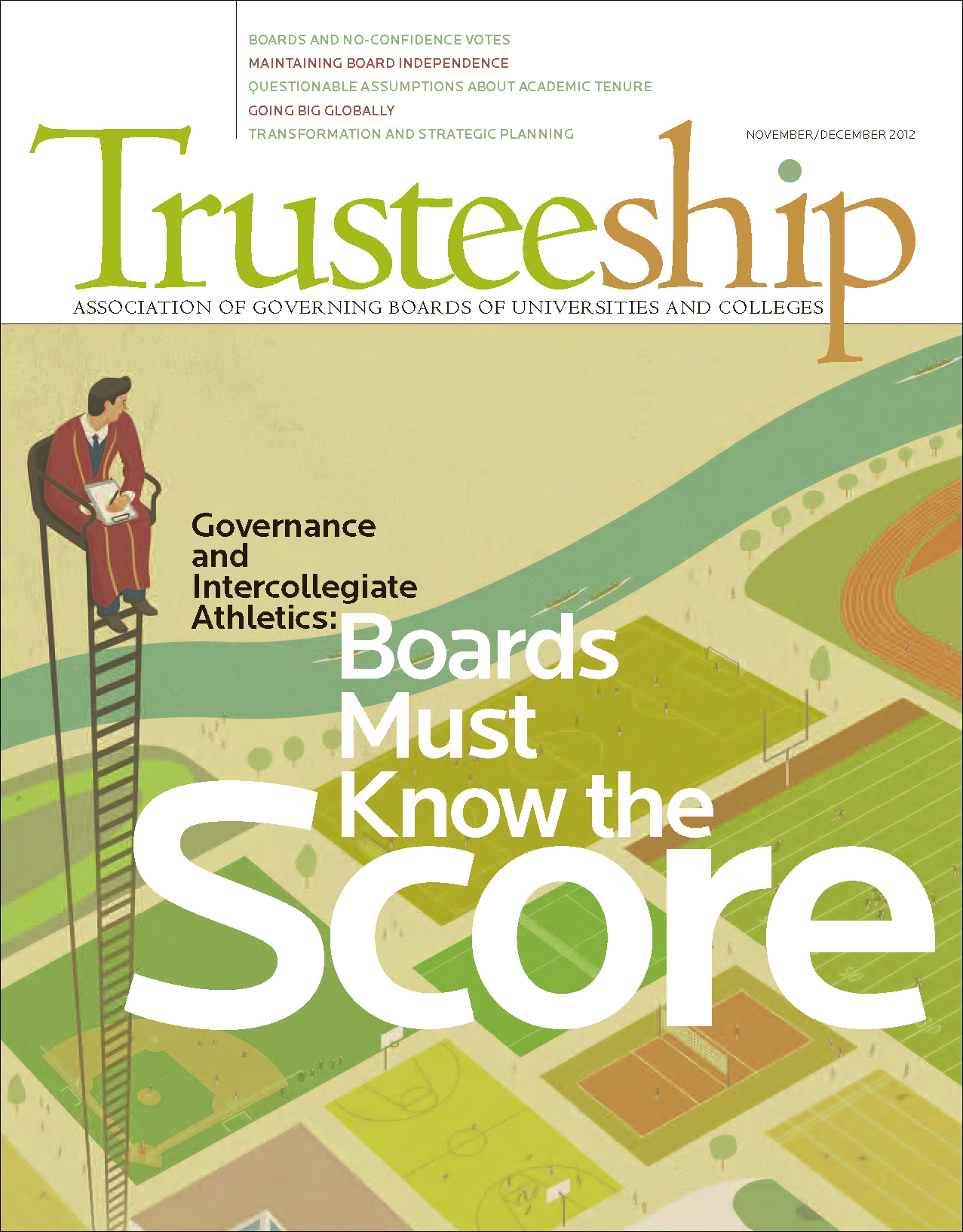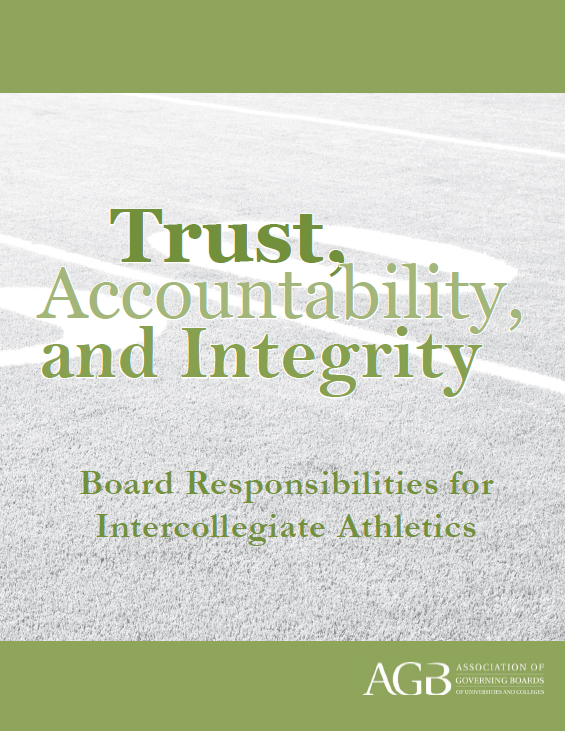Why this is important.
Intercollegiate athletics programs are staples of community building, and governing boards are essential in upholding the integrity and future vitality of athletics programs. Boards must implement policies that promote their institution’s educational mission, protect student athletes, and ensures high standards of transparency, ethical behavior, and accountability within athletics programs.
AGB presents three key principles for governing board accountability for intercollegiate athletics:
- While delegating administrative responsibility to the institution’s chief executive officer, the governing board is ultimately accountable for athletics policy in keeping with its fiduciary responsibilities.
- The governing board must accept accountability for upholding the integrity of the athletics program and ensuring it advances the institution’s educational mission.
- Governing boards must develop systematic approaches for upholding their responsibilities regarding athletics and apply themselves diligently to that work.
Source: AGB Board of Directors’ Statement on Governing Boards’ Responsibilities for Intercollegiate Athletics, AGB 2018
What should boards know about Name, Image, and Likeness? With rules and agreements changing rapidly, boards should be regularly informed about the institution’s athletics budget. Explore AGB’s Top Public Policy Updates: Intercollegiate Athletics to stay informed about changes to Name, Image, and Likeness, and other policies affecting athletics.
Questions for boards.
Click below to reveal key questions for your board to consider:
Preparation and Information Sharing
Consequential Questions:
- Does our institution orient trustees to their responsibilities concerning intercollegiate athletics? What does this program include?
- Is our board familiar with and engaged in the current issues facing intercollegiate athletics programs in the 21st century?
- Does our board receive data on where money flows in and out of the institution’s athletics programs?
- Are board members broadly familiar with all athletics programs offered at the institution and do they understand the governing board’s fiduciary responsibilities and accountability for athletics?
Sources:
AGB Board of Directors’ Statement on Governing Boards’ Responsibilities for Intercollegiate Athletics, AGB 2018
Board Responsibilities for Intercollegiate Athletics, AGB Governance Briefing
Structure, Processes, and Policies
Consequential Questions:
- Is our athletics department appropriately integrated into the general administrative structure of the institution in terms of finances, employment practices, and other operating procedures?
- Is an annual risk assessment conducted to evaluate the internal controls of the athletics department?
- Are campus policies in place to identify and remedy challenges faced by student athletes, including such issues as food insecurity, Title IX equity issues, academic integrity, etc.?
Sources:
AGB Board of Directors’ Statement on Governing Boards’ Responsibilities for Intercollegiate Athletics, AGB 2018
Board Responsibilities for Intercollegiate Athletics, AGB Governance Briefing
Outcomes
Consequential Questions:
- What is the impact of intercollegiate athletics on our campus climate?
- What benchmarks should be used to gauge the success of the athletics department and are they consistent with the institution’s mission and values?
- Has our board recently discussed the impact of student-athlete compensation and student-athletes profiting off their name, image, and likeness (NIL)?
Sources:
AGB Board of Directors’ Statement on Governing Boards’ Responsibilities for Intercollegiate Athletics, AGB 2018
Board Responsibilities for Intercollegiate Athletics, AGB Governance Briefing
Recommended resources.
We carefully curated these staff-picked resources for you:
College Athletics: What’s New, What’s Next?
Trusteeship magazine, March/April 2023
By Laura Wilcox
Intercollegiate Athletics: What Boards Need to Know
Podcast
Featuring Carol Cartwright, Jim Delany, and Tim Walsh
Legal Standpoint: IRS Weighs In on Name, Image, and Likeness Collectives
Trusteeship magazine July/August 2023
By Margaret Jarrell-Cole





















